
Fisherman's Bastion (the Hungarian name - Halászbástya), with its striking architecture and panoramic views of the Danube river and the historical area of pest, is one of the most visited and memorable sights of Budapest.
Fisherman's Bastion is included in the UNESCO world heritage site in Hungary.
Is the Fisherman's Bastion on Castle hill (West Bank of the Danube river), the Holy Trinity square (Szentharomsag ter). Included in the complex of the Buda castle.
Probably, to put it bluntly, the Fisherman's Bastion itself is not so historical and more like the scenery of some of the creations of Disney, is a kind of fairy-tale Bastion, where you can take great photos in Budapest, meet the sunset and just enjoy the gorgeous panoramic views.
Fisherman's Bastion was built between 1895 and 1902 in neo-Romanesque style by architect Friesem Solely, who was also responsible for the reconstruction of the nearby Matthias Church.
The Bastion was built on a site partially destroyed while the ramparts surrounding the Castle district and designed as an architectural backdrop to the Matthias Church.
The name "Fishing" originated from the fact that, probably, this part of the wall was entrusted under the protection of the Guild, but most likely due to the fact that in the middle ages the fishermen carried their goods to the fish market in the area adjacent to the Matthias Church, and, perhaps, for two reasons at the same time.
Currently, the Fisherman's Bastion is a decorated section of the former wall, has a length of about 140 meters, of which the southern part is about 40 meters North and 65 meters, and is richly decorated with a Central parapet is 35 feet.
The Bastion has seven tall towers, representing the seven Hungarian leaders - leaders of the Magyar tribes, who founded the current country in 895.
The towers of the Bastion are connected by passages, arcades and balustrades.
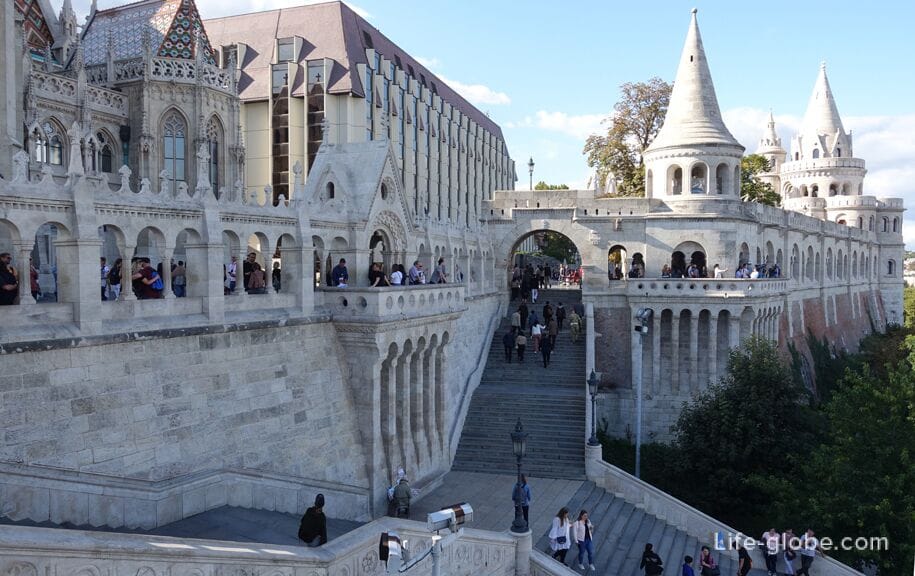
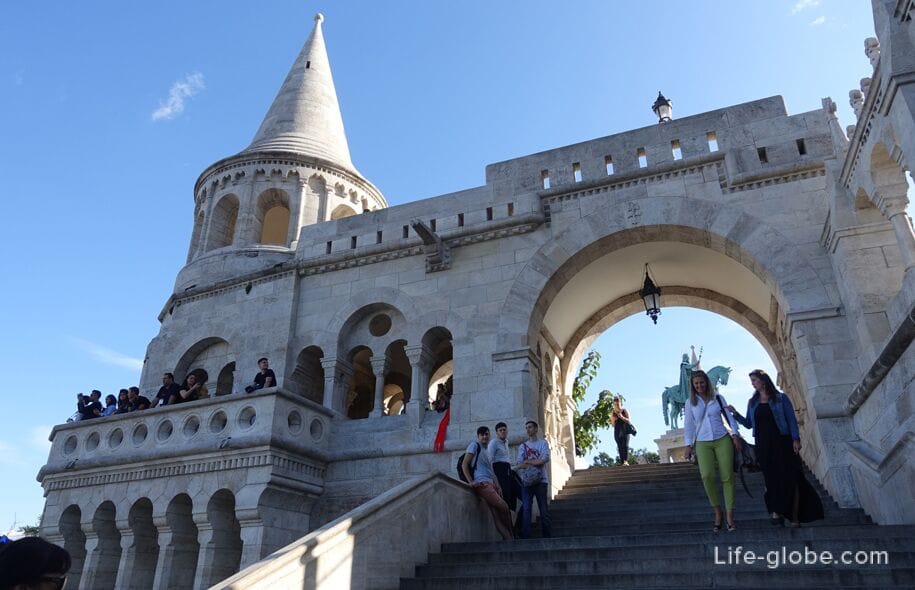
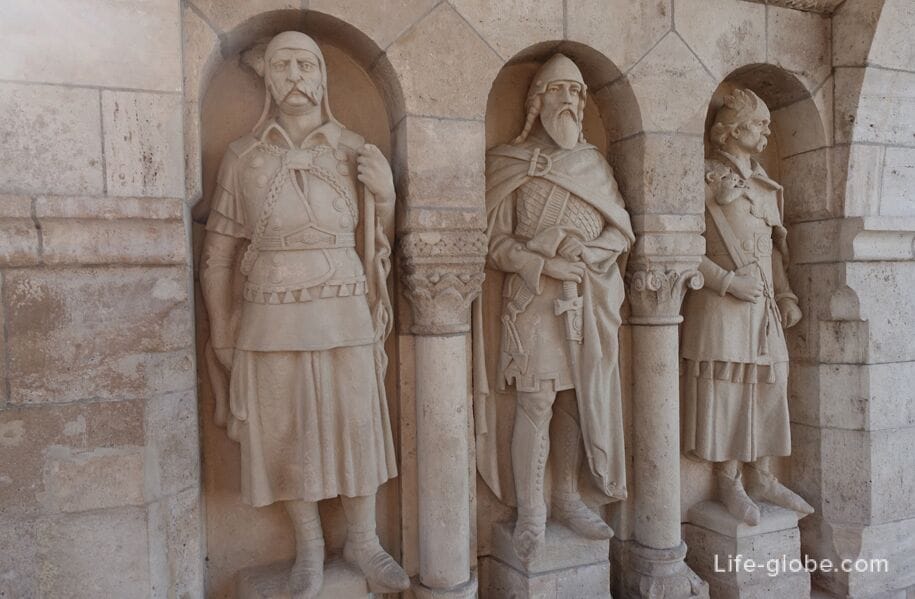


The Northern part of the Bastion, the center of the courtyard is decorated by a small fountain.
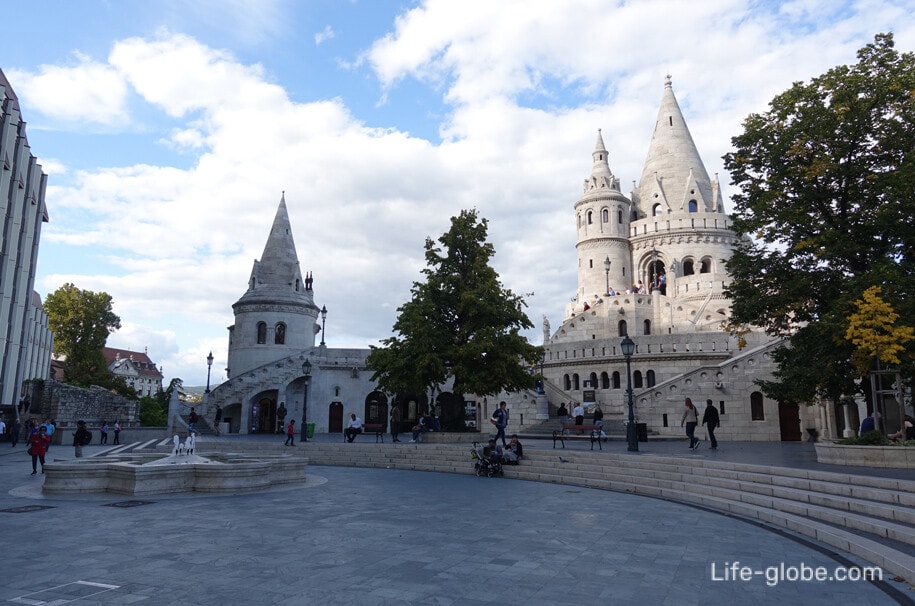
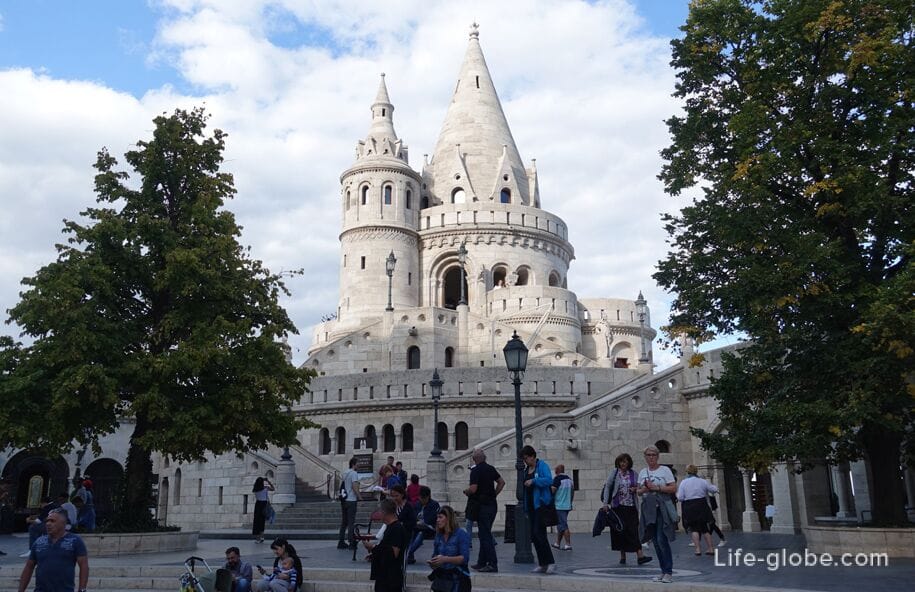
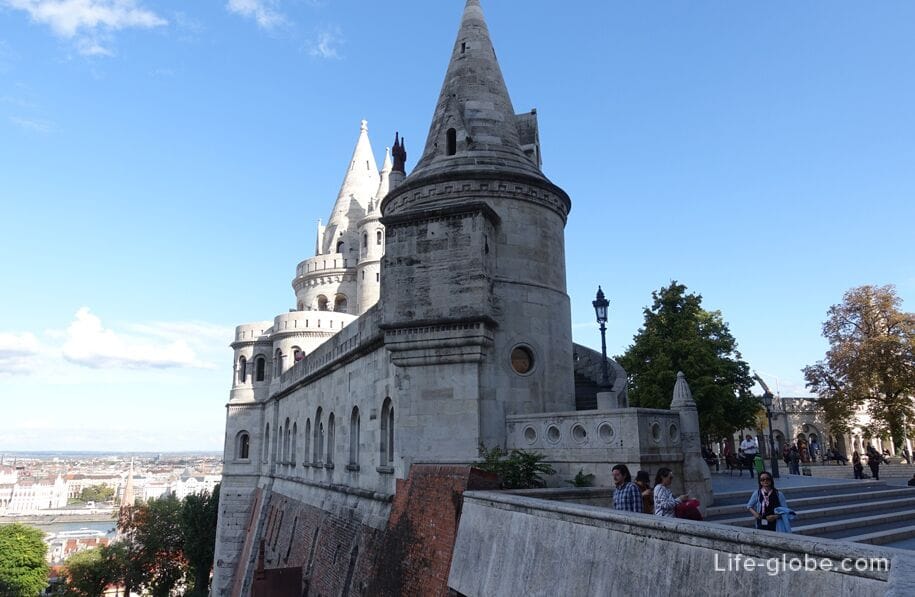
A wide Central staircase leading to the Bastion and the Matthias Church, originally was supposed to connect the Buda castle from the Danube promenade, but remained unfinished.

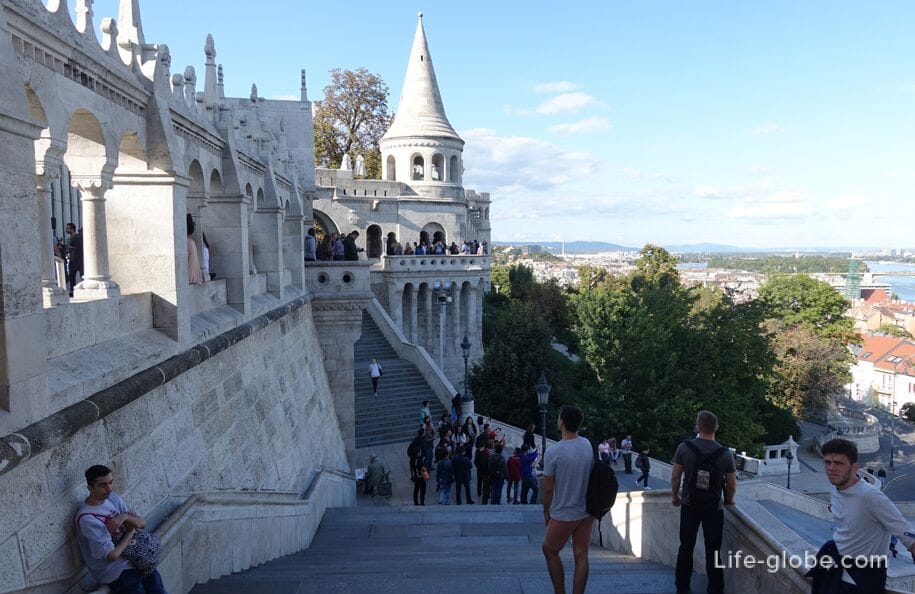
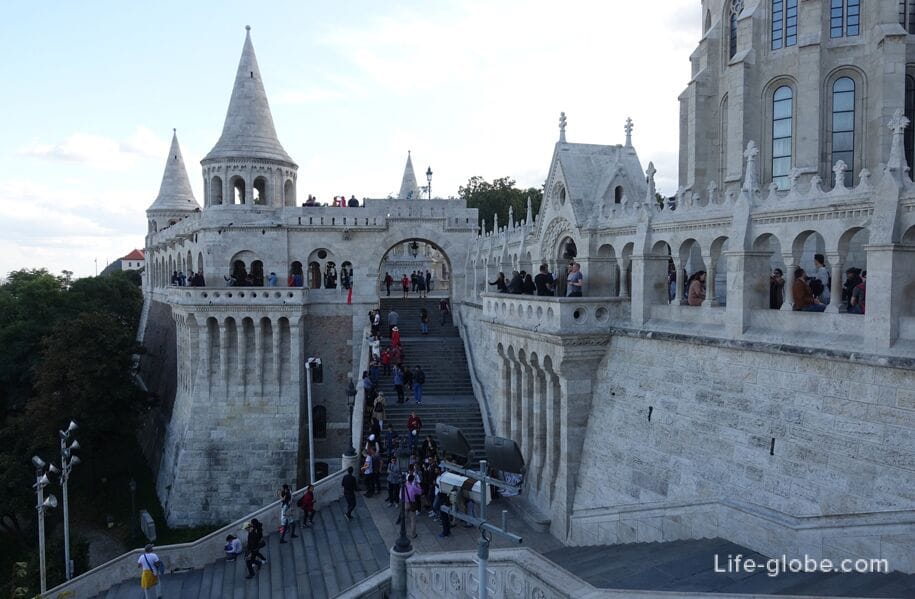
In the Bastion are panoramic restaurant and a cafe bar.
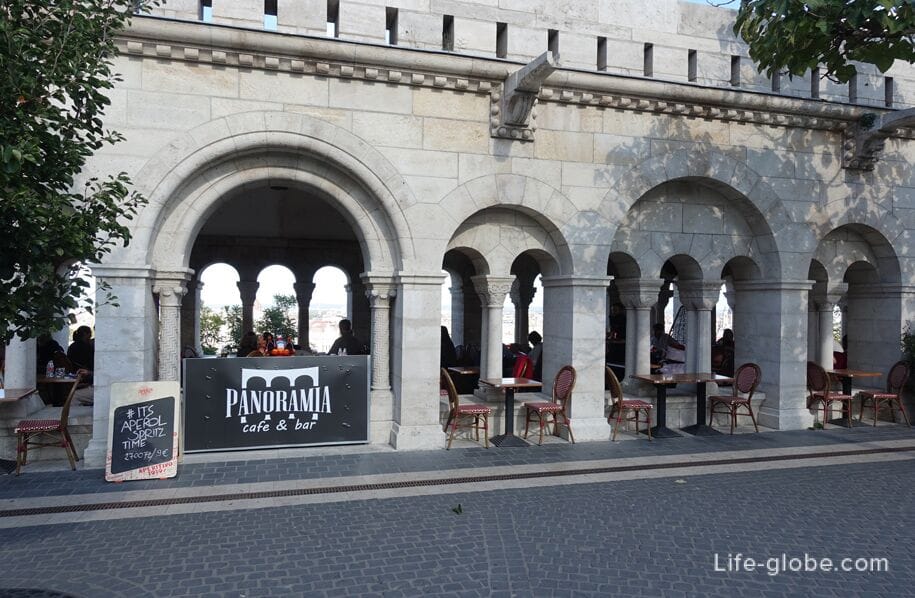
To examine the lower part of the Bastion is available for free at any time of the day. From many points of Bastion offer some of the best views of the Danube river, the historical area of pest, including the Pest embankment, the Gresham Palace, St. Stephen's Basilica and the remarkable Hungarian Parliament buildingwhich is one of characters and one of the main attractions of Budapest.

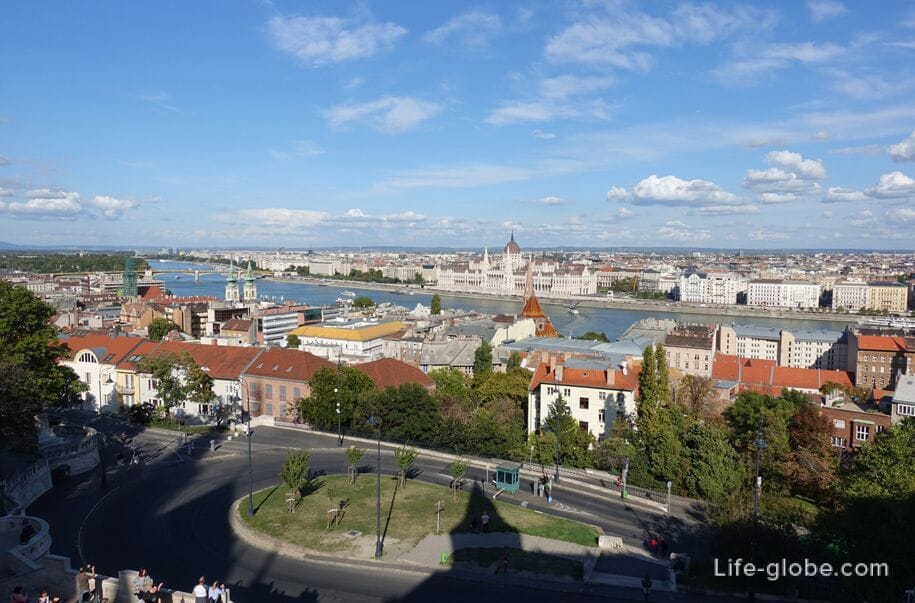

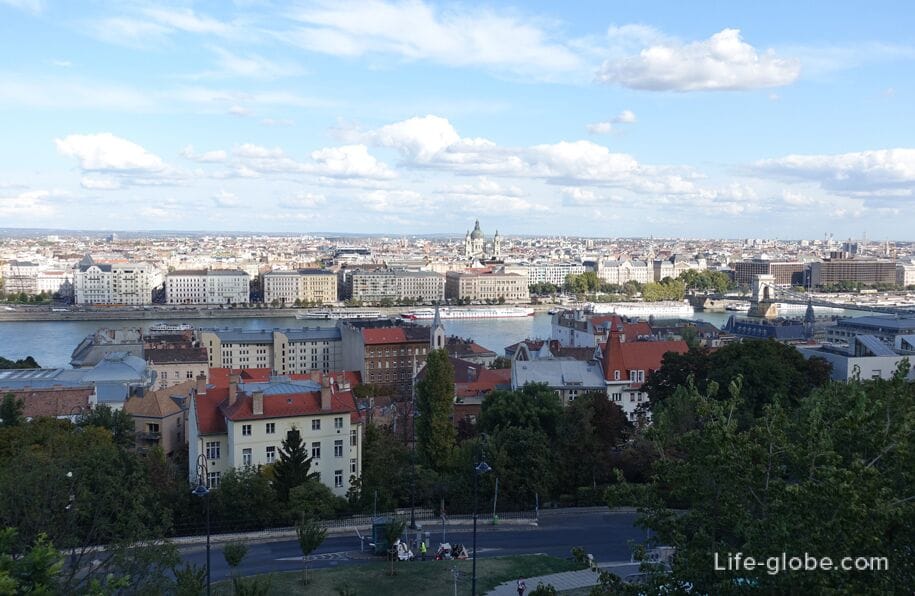
In the high tourist season (from March 16 to April 30: from 9:00 to 19:00 hours and from 1 may to 15 October: from 9:00 to 20:00 hours) access to the top floor of the Fisherman's Bastion and towers are paid. The cost of a full ticket is 1 000 HUF. On the national holiday, 20 August, admission is free.
Attention! Watch paid visits to parts of the Bastion and the cost of tickets may vary, please check the information before visiting on the website.
"Sources if you come to Bastion in time (that is, when the ticket office is closed), no one will mind if you step over a modest barrier, and wander around the top floor for free. Just don't say that we will so advise))
The best views of Fisherman's Bastion, the Church of Matasi and nearby surroundings are opened from the Pest embankment.
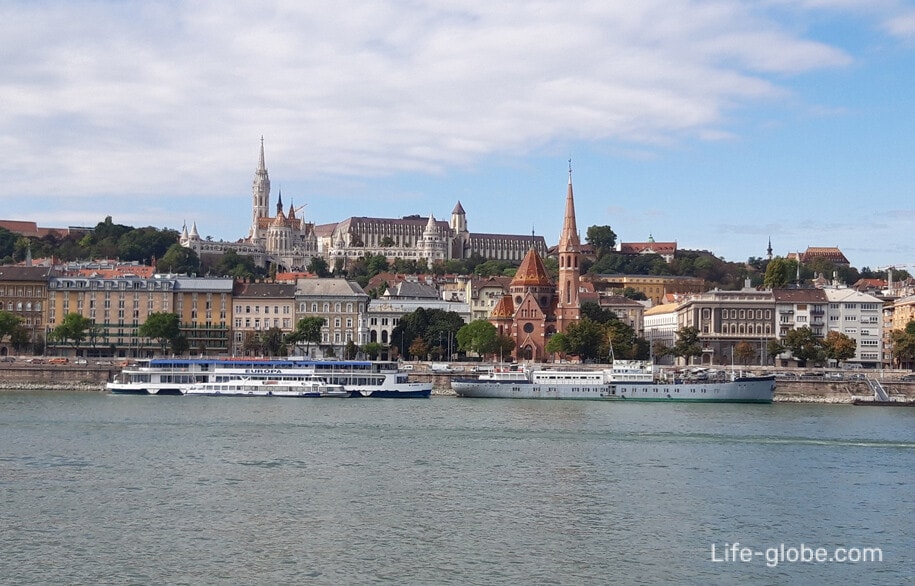
As the researchers suggest, under the Buda hills, on which stands the Bastion is the whole complex of the Buda castle, padded multi-kilometer network of tunnels and passages.
One of the possibilities to go underground is a visit to the chapel of St. Michael, which was accidentally discovered during the construction of the Fisherman's Bastion.
In the chapel there is a small exposition dedicated to the history of Hungary, and in the lower hall viewers are invited to watch a 14-minute multilingual 3D film is devoted to 1000-year history of Hungary.
The entrance to the chapel is from the southern part of the Bastion, near the side stairs and the third tower.
Ticket price is 1500 HUF or 5 EUR. The cost of tickets and visiting hours can be found on the website.

On the square of the Holy Trinity, near Matthias Church and the southern part of the Fisherman's Bastion (Bastion of the so-called South yard) is a monument - a bronze equestrian statue, dedicated to the founder and first ruler of the Kingdom of Hungary, Saint Stephen I (Szent Istvan szobra), established in 1906.
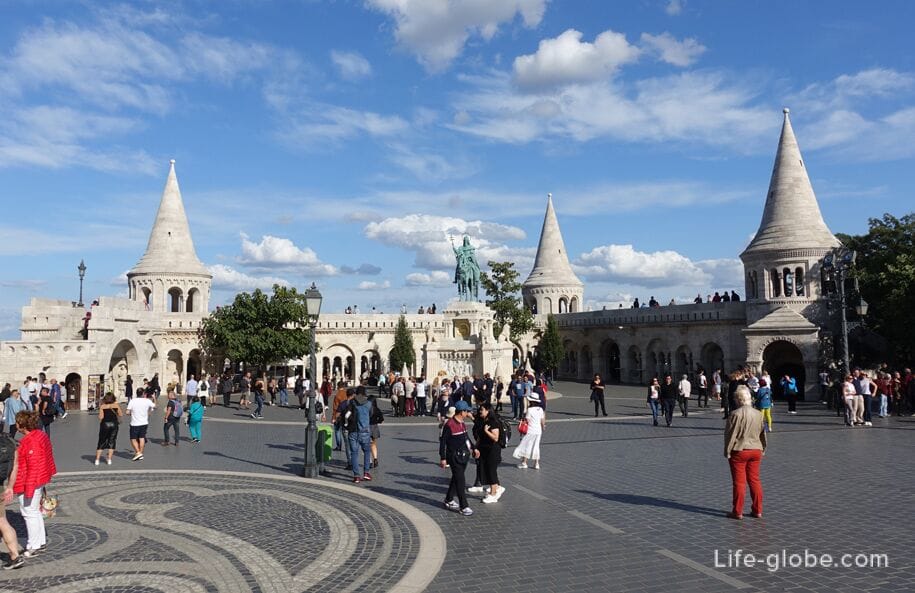
The views of the statue of St Stephen and Matthias Church. Read more about Matthias Church...
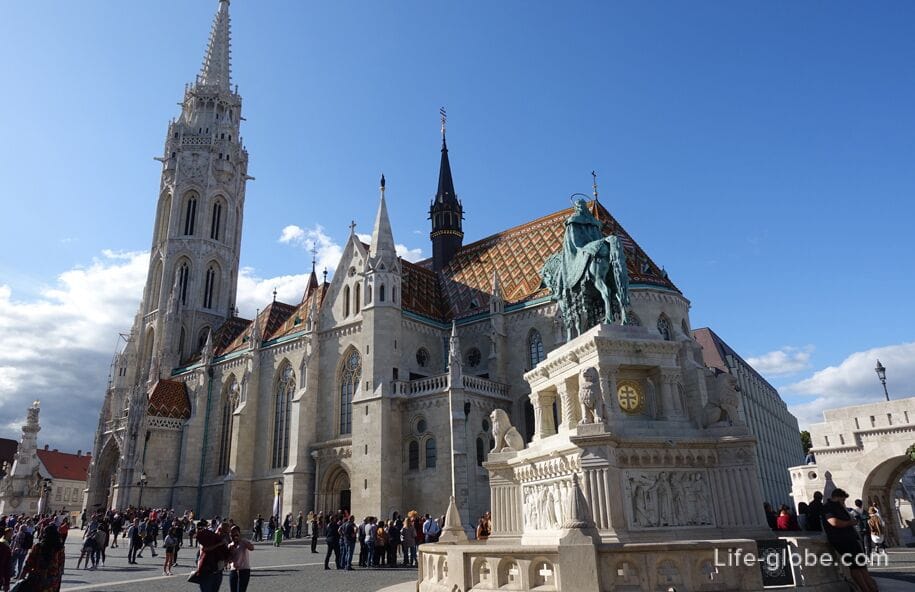
Statue of monk Julian and Gerhardus, the work of Antal karolyi, 1937.
The monument depicted Julian and Gerhardus, are on the order of Andrew II went in search of the remaining Hungarians in the Ancient Homeland.
The statue is set for 5 star hotel Hilton Budapest, in the proximity of the last North tower of the Fisherman's Bastion, in a horseshoe-shaped apse of the garden of the former Dominican Church.
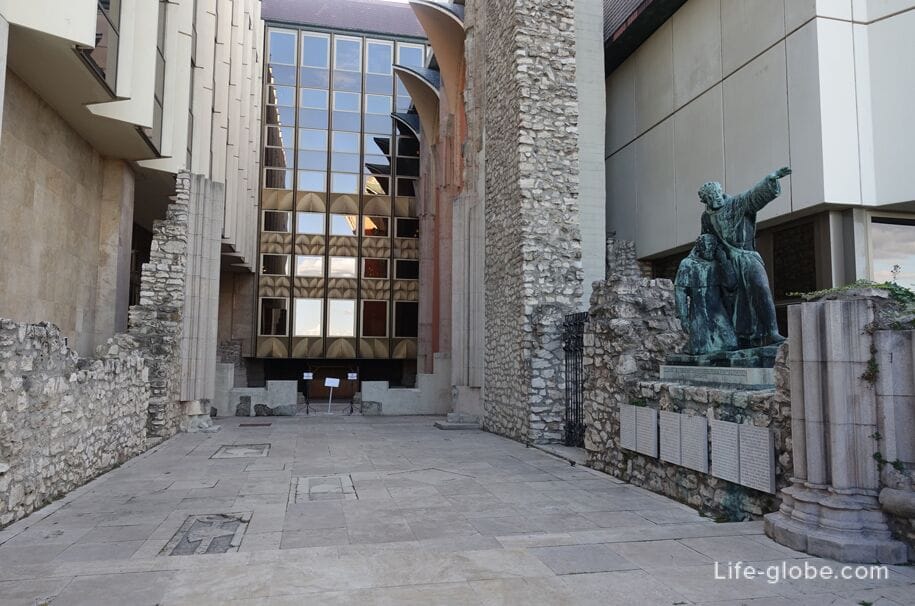
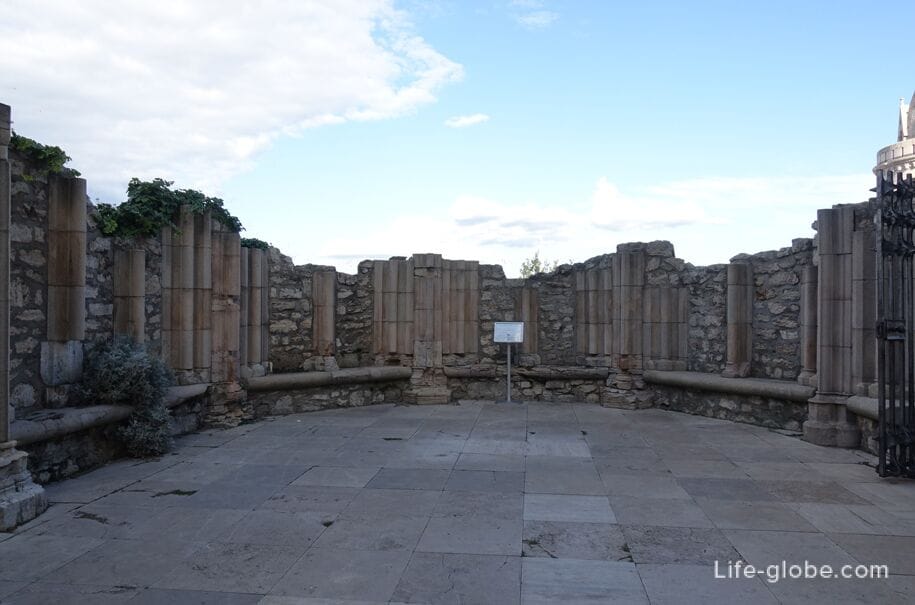
The statue of jános Hunyadi and the statue of St. George, located in the lower part of the Bastion, near the foot of the Central staircase, are also integral parts of the Fisherman's Bastion.
The statue of Janos Hunyadi was made by the sculptor istván Tatai and opened in 1903. Neo-Gothic limestone Foundation was built in accordance with plans Suleka, forming a single piece with the rest of the Fisherman's Bastion. The hero is depicted in armour, with crow's helmet on his head, sword in hand, and with military awards, symbolizing the winner.
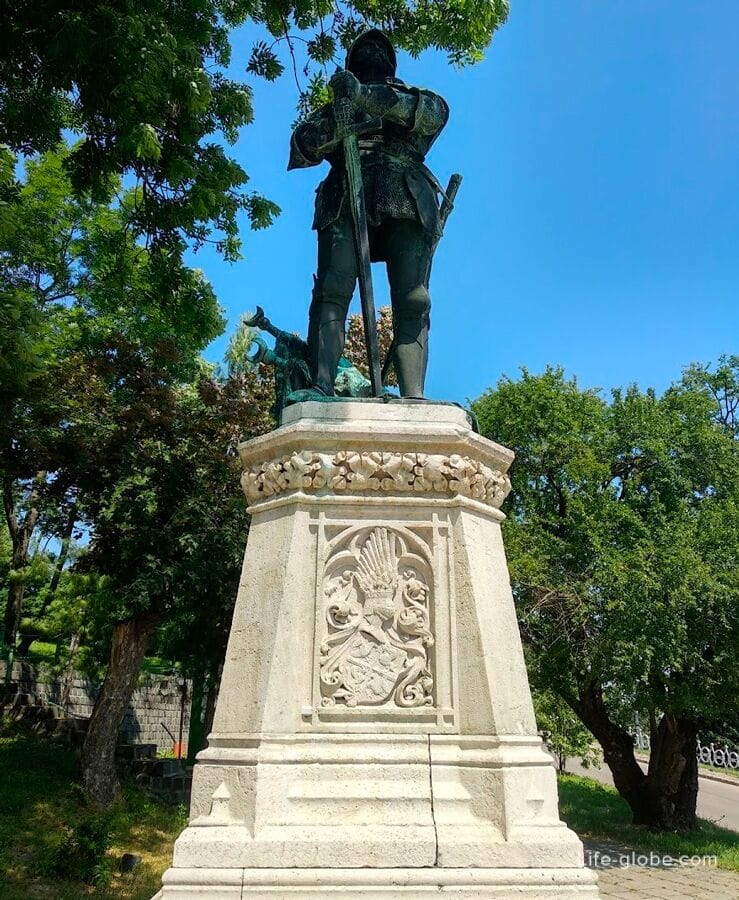
A bronze replica of the statue of St. George (the original is in Prague), slaying the dragon, located near the statue of Janos Hunyadi.
